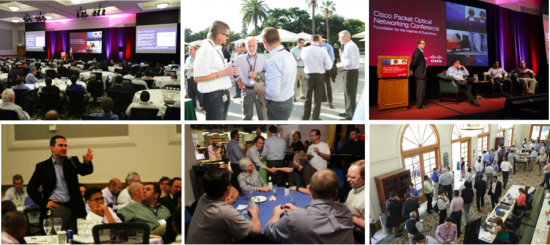At Cisco, we have identified the Internet of Everything (IoE) as the next wave of the Internet, an explosion of connectivity among people, process, data, and things. We have estimated that these connections in the IoE offer a staggering $19 trillion in Value at Stake over the next decade for both private and public sectors. And now that IoE is here, it’s important to talk about how both enterprises and public-sector organizations can take full advantage of this market transition. To help, Cisco is offering two comprehensive pieces of thought leadership to illustrate a roadmap for IoE. A Fast IT strategy helps enterprises capture their share of the IoE Value at Stake. The Internet of Everything in the Public Sector research explores how IoE is transforming government to demonstrate how public-sector organizations can capture their share of the IoE Value at Stake.
By Jordi Botifoll
Recently I had the opportunity to participate at the Mayoral Innovation Summit in Miami where I had the chance to meet several mayors from Latin America and other global cities like Miami and Barcelona to discuss how they are transforming their communities into “smart cities” through the power of innovative technology. We exchanged ideas on best practices to improve the citizen quality of life, strengthen government efficiency in urban centers, while fostering sustainable economic growth.
As part of the smart cities movement happening around the world, Cisco is releasing new study this week on the Internet of Everything value at stake for public sector that provides top 10 insights for how jurisdictions can capture IoE value. Cisco identified and profiled more than 40 public sector jurisdictions that are putting IoE in action and producing positive results. One of those jurisdictions is Guayaquil, in Ecuador.
Guayaquil is a city of 2.5 million and is visited by up to 300,000 travelers on a daily basis. The city also experiences some educational and poverty challenges like most Latin American cities. In Guayaquil, only 44 percent of citizens have internet access through the local telecommunications companies, but its forward-thinking govermnent is investing in technology and connectivity to make Guayaquil one of the first metropolitan areas in South America to be a digital city. With help from Cisco Emerging Advisory Services, the city is expanding its public Internet access for citizens, connecting hospitals and clinics, providing e-government solutions, and investing in computers, tablets, and Internet access for public schools and universities. Guayaquil is becoming a reference for other Latin American cities. Let me summarize some of the innovations the city is pursuing to become a digital city:
The city has developed digital kiosks, public Wi-Fi areas, a telemedicine program, and an Internet education campaign to help residents of Guayaquil get the most out of all that the Internet has to offer.
The mayor of Guayaquil has a stated that his goal is to help every resident of the city become a “digital citizen,” with the intent of providing education in technology skills and encouraging entrepreneurial investment in the technology sector.
The mayor recently announced plans to develop full Internet coverage for the city in the next five years. To assist in helping increase Internet connectivity and usage, the city government is also providing tablets and laptops to students and desktops to schools.
Cisco has been instrumental in assisting Guayaquil to develop its digital kiosk system. The kiosks provide general information about the city, as well as provide remote access to city government services so residents can conduct city business, such as pay for utility service or apply for a land-use permit.
Cisco has also been a key participant in assisting Guayaquil to develop the city’s telemedicine program involving networking the major local hospitals that are located closer to residential areas. The network provides video conference and patient diagnostic capabilities that allow doctors to diagnose, monitor, and consult with patients who are visiting clinics located near their homes, saving travel time, improving patient access and medical monitoring capabilities.
The city has also established over 50 public Wi-Fi spots located throughout Guayaquil. Most of these are located in educational environments, with the goal of helping students take advantage of the educational opportunities available online. The city is also actively working to integrate technological skills into the education curriculum by providing tablets to students.
The city’s technology efforts have been extremely well received by the public in Guayaquil. The public Wi-Fi and tablets are popular among the younger generation, while the telemedicine program has been very well received by those who lack both economic and physical mobility.
I am confident several other cities in Latin America will follow Guayaquil’s example and we are working closely with big and small cities through the region to help them implement Internet of Everything strategies.
Share:
 Leadership and Change Management courses I teach in various ways: bringing into the room-virtually–guest lecturers, authors of text, and leaders from anywhere in the world; recorded videos from multiple sources; and students who can connect virtually and create their own content for the class. The engagement and learning impact is significant, in my opinion—and the student feedback is very positive.
Leadership and Change Management courses I teach in various ways: bringing into the room-virtually–guest lecturers, authors of text, and leaders from anywhere in the world; recorded videos from multiple sources; and students who can connect virtually and create their own content for the class. The engagement and learning impact is significant, in my opinion—and the student feedback is very positive. By Leonard Luna, Senior Marketing Manager, Cisco Service Provider Solutions
By Leonard Luna, Senior Marketing Manager, Cisco Service Provider Solutions
 Written By George Tupy, Marketing Manager, Cisco Service Provider Video
Written By George Tupy, Marketing Manager, Cisco Service Provider Video
CONNECT WITH US